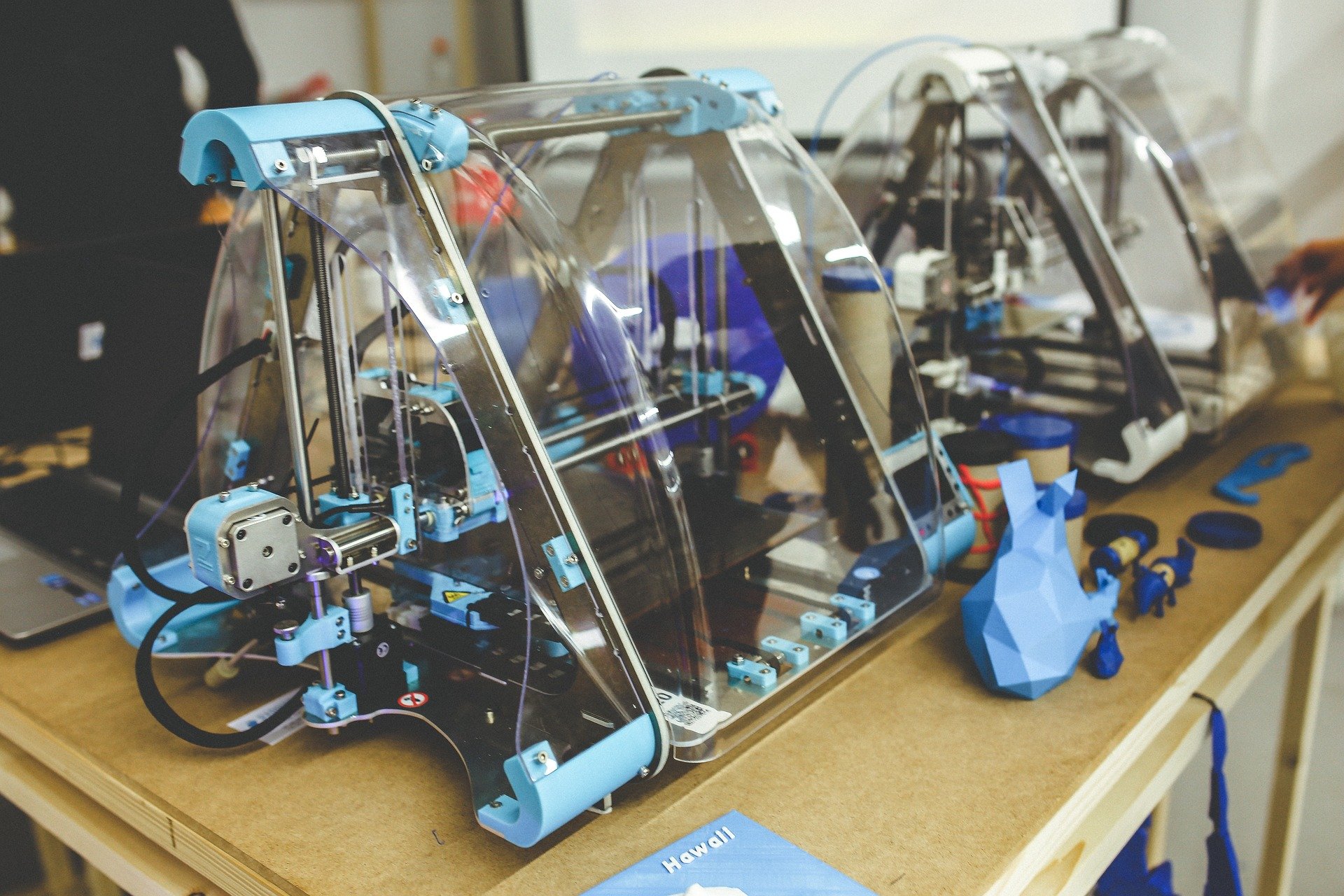How Companies Can Benefit From Converting Traditional Methods To Additive Manufacturing
As a manufacturing business, are you looking to advance your production capabilities? Want to produce complex objects in a cost-effective manner? Need a single machine that can handle all the aspects of creation? Need less labor to oversee the production process? All this and more is possible with the help of additive manufacturing.
Additive manufacturing is a powerful technology that has advanced the production of complex objects in many industries. Today, it has become a critical manufacturing technique for production. Many manufacturing companies are using it to produce functional or end-user parts. What is it? What are the different types of additive manufacturing? What are its benefits when compared to traditional methods? Which industries can benefit from additive manufacturing? We will look into all these in the coming sections.
Let’s begin with what additive manufacturing is.
What Is Additive Manufacturing?
Additive manufacturing is adding materials to create an object. It is created by building layer by layer. This is totally different from the traditional manufacturing methods where an object is produced by cutting a solid material until it forms into a shape or into a final product.
How does additive manufacturing work? To create an object, first, the design has to be prepared. The design can be prepared with the help of CAD (Computer Aided Design) software. Once the design is prepared, the software converts the design into a layer-by-layer framework which is then sent to a 3D printer. The 3D printer then starts creating the object. While creating the objects, it uses materials such as polymers, metals, ceramics, gels, and foams to name a few.
There are a different number of ways to create an object using additive manufacturing. Here are the details of some of the ways used in additive manufacturing.
What Are The Different Types Of Additive Manufacturing?
Binder Jetting
Binder jetting is considered to be the fastest in terms of creating an object when compared to the rest of the additive manufacturing processes. In this method, the binder jet uses liquid materials that are jetted on thin layers of powder. The print head moves horizontally and vertically, putting down a new layer with every pass and gluing the layers together to form an object. Binder jetting is used in manufacturing medical devices, aerospace components, and others.
Directed Energy Deposition
Directed Energy Deposition uses the principles of welding. In this method, a wire or powder is melted using a high-focus beam like a laser. Once it is melted, the liquid material is poured onto the build platform where it gets hardened and forms a layer. This process is repeated until the 3D object is formed.
Material Extrusion
Material Extrusion (FDM) uses materials such as polymers and plastics to create an object. In this method, the tip of the nozzle of the machine heats and melts the material. The liquid material is poured layer by layer on the build platform which then hardens and forms an object. Since it is inexpensive, many small businesses and companies make use of material extrusion to create an object.
Material Jetting
Material Jetting creates an object similar to how binder jetting creates. The difference is, material jetting uses wax-like materials and melts them, and deposits micro-droplets of liquid layer by layer on the build platform to form an object. However, in binder jetting, it prints liquid on a powder, building layer by layer to create an object.
Since it is inexpensive just like material extrusion, many manufacturers use material jetting to create an object. Though inexpensive, it takes a lot of time to build an object because it does it droplet by droplet.
Powder Bed Fusion
In this method, a large bed of powdered material is used to produce an object. Usually, plastic or metal mixed with sand is used as the powder. The powder is fused using a laser beam and once a layer is formed, another layer is created. This process continues until the object is created. Compared to other types of additive manufacturing, the Powder Bed Fusion develops complex objects that are strong and durable.
Advantages Of Using Additive Manufacturing
Creates Prototypes At A Faster Pace
Additive manufacturing enables the creation of multiple different prototypes at a much faster rate and at a cheaper cost compared to traditional methods.
Has The Ability To Create Complex Geometrical Objects
Additive manufacturing can be used to create complex objects which are difficult to create using traditional methods. Even if they are created with traditional methods which is rare, they are not as strong and as light as the ones created using additive manufacturing. Also, creating complex parts with additive manufacturing is inexpensive when compared to traditional methods.
Enables Easy Customization
One of the biggest advantages of additive manufacturing is it enables customization. This means it gives you the opportunity to modify the design during production and offer customized designs to your clients. On the other hand, traditional manufacturing methods do produce mass products but offer little room for customization.
It Reduces Waste Production
In traditional manufacturing methods where the subtractive manufacturing process is used in which a large material is removed to create an object. Since they use such a process, a lot of material gets wasted. In contrast, additive manufacturing produces an object by adding materials, therefore ensuring minimal waste.
Combines Manufacturing And Assemblies Into A Single Process
Traditionally, companies manufacture different parts and then assemble them to make one single product. However, with additive manufacturing, it doesn't work like that. You can manufacture and assemble parts in one go. Here, manufacturing and assembling are combined into a single process.
A Single Device Is Used To Handle The Creation
In traditional manufacturing, manufacturing a product involves several steps and almost every step requires different machines. On the other hand, in additive manufacturing, a single device is enough to handle all aspects of the creation process.
Requires Less Labor
Since different machines are used in traditional manufacturing, to handle them, different skilled laborers are a must. In comparison, since a single device takes care of the creation process, minimal labor is required.
Shortens Supply Chain
In traditional manufacturing, machines are set up in factories at a particular location, and there, products are created and distributed. This involves a large supply chain. On the other hand, in additive manufacturing, the printing device can be set up locally closer to the end users and not at a centralized factory. As a result, shortens the supply chain and also reduces the cost of shipping.
Doesn’t Require A Lot Of Investment
Additive manufacturing is cost-effective and easy to set up since companies can design and produce their products using a single device. However, in traditional manufacturing, a whole factory has to be set up which involves a lot of investment.
Additive manufacturing technology is particularly useful for small businesses and startups who want to venture into the manufacturing business.
Reduces Inventory Storage
Additive manufacturing reduces inventory storage. Since the parts are printed on demand, it eliminates the storage of products in bulk.
Which Industries Can Benefit From Additive Manufacturing?
The top 5 industries that have benefited from additive manufacturing are:
Aerospace
Medical
Transportation
Energy
Consumer Products
Aerospace
Aerospace was one of the first industries to adopt additive manufacturing to manufacture some of the critical parts that can withstand harsh conditions. The aerospace industry requires parts that are high in strength and less in weight and only additive manufacturing can produce such parts. Some of the additive manufacturing applications in the aerospace industry include environmental control systems ducting (ECS), rocket engine components, UAV components, oil & fuel tanks, and so on.
Medical
The medical industry is widely using additive manufacturing to develop components that provide solutions to doctors and patients as well. Some of the additive manufacturing applications in the medical industry include orthopedic implant devices, dental devices, CT scans, and many others.
Consumer Products
Additive manufacturing has been beneficial for a lot of consumer products manufacturing companies like sporting goods manufacturers, electronic manufacturers, etc. Since they have the ability to produce a large volume of products on demand, this is one of the reasons many consumer goods manufacturers use it.
Energy
Additive manufacturing has been used in developing key components be it for the gas or oil industry. Some of the key additive manufacturing applications include rotors, turbine nozzles, flow meter parts, and many others.
Transportation
The transport industry requires lightweight components which are sturdy and can withstand extreme conditions like heat. And additive manufacturing does exactly that. It manufactures components that are lightweight and strong. Some of the additive manufacturing applications in the transportation industry include grilles, complex ducts, elastomeric models, and others.
Conclusion
Additive manufacturing will change the future of manufacturing. Its on-demand manufacturing, easy customization, less labor, environment-friendly, and ability to develop complex objects at a faster pace at a low cost, gives additive manufacturing an advantage over traditional methods. In the future, it could replace traditional manufacturing methods and transform the whole manufacturing process. It is only a matter of time before this happens.
If you are looking for experts to help with manufacturing your products, we can do that. We offer digital manufacturing solutions, a digital warehouse, and AM design experts in-house. Reach out directly or simply upload a 3D model.



